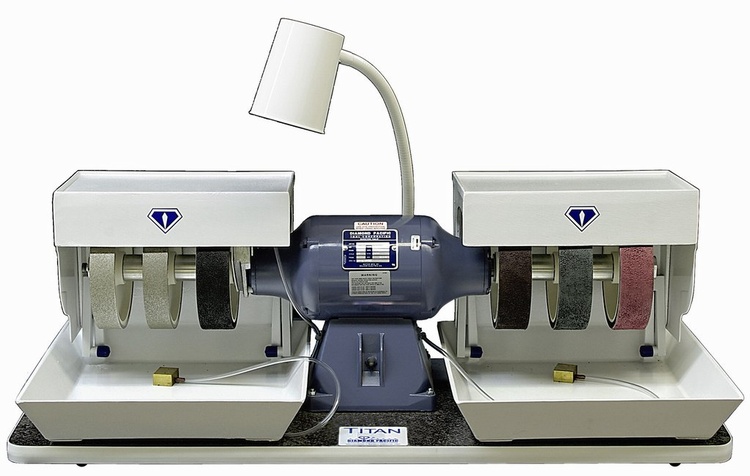-
-
0
My Shopping Bag
0 Items in Your Bag
Lapidary and Cabochons
Lapidary and Cabochon Cutting
Lapidary is the name associated with the engraving, cutting or polishing of stones and gems.
Its roots can be traced back many thousands of years with the art of bruting (the shaping of a specimen by rubbing one stone against another harder stone).
Modern technology means that we can now carry out the same tasks in a less mundane way, with better results in a shorter time.
Cabochon cutting starts with the rough material this can either be a large stone (boulder type) or a slice taken from a large stone (referred to as a slab).
The slab is assessed for fractures and using templates we select the best areas and shapes to get make the most of the usable area (on some slabs this may mean only one cabochon from a large slab, due to fractures or soft areas). The shapes are then trimmed out roughly on a trim saw with a thin diamond lapidary blade.
From there we move to the grinding and polishing process, which involves a minimum of 7 different stages progressing from rough shaping through several levels of sanding and then on to final polishing. The hardness and condition of the stone will dictate the time taken for each cabochon to be completed, but some of the more complex stones, such as Pietersite and Tiffany can involve several hours work to finish a single piece.
At Jamgems we don't drill cabochons unless the customer requests it (an option on the product page) because many people, specifically craft enthusiasts and jewellers, prefer to set or wrap the stone themselves. We can however drill most stones and we are equipped with the latest diamond cutting and drilling equipment.
The main appeal of Cabochons is that every single item is unique and truly a one-off and we hope that our customers will appreciate the time and effort taken in producing each stone or item of finished jewellery.
- 15 March 2019
- General Blog
- Jason

